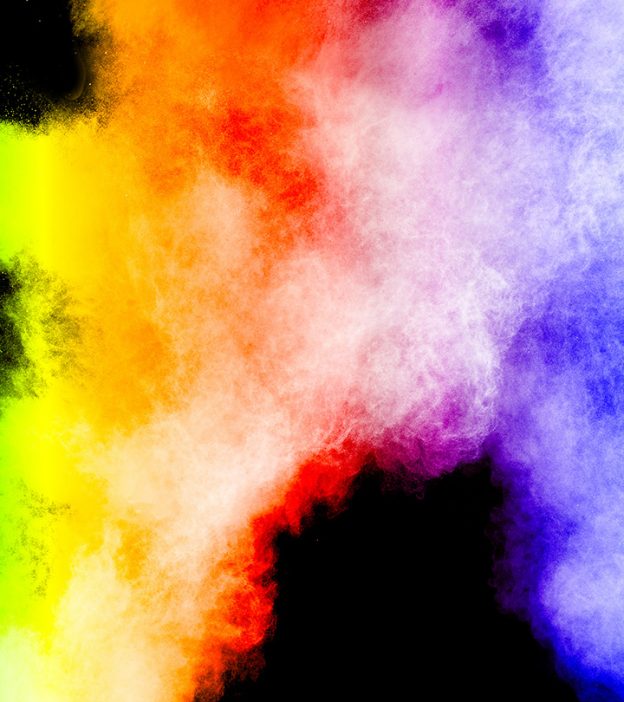Psychologists agree that coloring is an excellent alternative to meditation, as it can induce relaxation and mindfulness by diverting attention away from stressors and onto the present moment. By engaging in the act of coloring, the brain can focus and concentrate, nurturing attention and reducing overthinking.
This simple yet effective exercise allows individuals to enter a more creative and accessible state, providing a much-needed mental break. It is recommended to color in a quiet environment, possibly with soothing music, to fully immerse oneself in the experience and let the color and lines flow.
Overall, coloring offers a practical and accessible way to achieve the benefits of meditation without the need for extensive training or practice.

The Psychological Benefits Of Coloring
Psychologists recommend coloring as the best alternative to meditation. It can relax the brain, reduce stress, and induce a state of mindfulness and quietness, providing a much-needed break after a long day at work. Coloring takes your attention away from stressors and onto the present moment, similar to a meditative exercise.
Coloring As A Form Of Meditative Therapy
Coloring has long been recognized as a form of meditative therapy. Renowned psychologist Carl Jung was one of the pioneers of using coloring to achieve a meditative state. He focused on the creation and coloring of mandalas, intricate circular designs that symbolize wholeness. This creative process helps individuals connect with their inner selves and the universe. By immersing themselves in coloring, individuals can experience a sense of calmness and achieve a meditative state.
Reducing Stress And Anxiety
Engaging in coloring activities has been found to have a significant impact on reducing stress and anxiety levels. When we color, the amygdala, our brain’s fear center, is relaxed. It promotes a state of mindfulness similar to that experienced during meditation. Coloring allows us to quiet our restless minds and generate a sense of peace and tranquility. After a long day at work, coloring provides a much-needed break for our minds to rest and rejuvenate.
Enhancing Focus And Concentration
Coloring activates different brain areas, stimulating our focus and concentration. By practicing mindful coloring, we purposefully pay attention to the present moment rather than being on autopilot. We develop a heightened awareness of our actions and surroundings as we choose colors and carefully color within the lines. This deliberate focus enhances our cognitive abilities and nurtures our attention. Regularly practicing mindful coloring can improve our overall ability to concentrate on tasks and stay focused for extended periods of time.
By understanding the psychological benefits of coloring, we can appreciate it as more than just a leisure activity. It is a powerful tool for achieving a meditative state, reducing stress and anxiety, and improving our focus and concentration. Incorporating coloring into our daily routines can profoundly impact our mental well-being, allowing us to find moments of calmness and mindfulness amid our busy lives.

Coloring As A Mindfulness Practice
Coloring is a mindfulness practice that psychologists say is the best alternative to meditation. It relaxes the brain, reduces stress and anxiety, and helps focus the mind on the present moment. Additionally, it fosters creativity and allows individuals to enter a more peaceful state.
Improving Mindfulness
Mindfulness is the ability to focus and stay in the present moment, and coloring can be a helpful tool in improving this skill. When we engage in coloring, we fully absorb the activity, paying attention to the colors and staying within the lines. This intentional focus on the present moment lets our mind let go of distractions and worries, promoting a sense of calm and mindfulness. By practicing mindfulness through coloring, we can become more in tune with our thoughts and emotions, fostering greater self-awareness and overall well-being.
Relaxation And Brain Relaxation
Coloring is a simple yet effective way to induce relaxation and quieten a busy mind. When we color, our brain enters a state similar to meditation, reducing the thoughts and anxieties that often plague us. This shift in focus allows our brain to rest, providing a break from the constant mental chatter. The repetitive and rhythmic movements involved in coloring activate the relaxation response in the brain, releasing feel-good hormones such as endorphins.
An Alternative To Overthinking
Overthinking is a common habit that can lead to stress and anxiety. Coloring offers an alternative to overthinking by diverting our attention away from our worries and onto the coloring page. It provides a simple and enjoyable activity that occupies our minds, allowing us to take a break from overanalyzing and ruminating. By coloring, we create a mental shift, replacing negative thoughts with a sense of calm and creativity.
Coloring As A Relaxation Technique
Psychologists have long recognized the benefits of meditation for promoting relaxation and reducing stress. However, not everyone finds meditation to be a suitable practice for them. That’s where coloring comes in. Coloring has gained popularity as a relaxation technique in recent years, with psychologists suggesting it can be a viable alternative to traditional meditation methods.
Entering A Creative And Free State
We enter a creative and more accessible state of mind when coloring. Choosing colors, deciding how to fill the spaces, and letting our imaginations guide us allows us to tap into our creative potential. This innovative process helps to distract our minds from daily worries and transports us into a state of flow, similar to what is experienced during traditional meditation.
Creating A Quiet Environment
To fully benefit from coloring as a relaxation technique, creating a quiet environment is essential. Find a comfortable and peaceful space to focus on the coloring activity without distractions. This could be a cozy corner in your home or a quiet park bench surrounded by nature. Clear your mind of any thoughts and let the coloring process become your sole focus.
Unlocking Creative Potential
Not only does coloring provide relaxation and stress relief, but it also unlocks our creative potential. As we engage in this activity, we are often surprised by the ideas and designs that flow from our minds onto the paper. Coloring allows us to tap into our creativity, helping us to think outside the box and unlock hidden talents.
Ultimately, coloring as a relaxation technique offers a unique and enjoyable way to achieve a state of calm and mindfulness. It’s a beautiful alternative for those who find traditional meditation practices challenging or uninteresting. So grab your colored pencils or markers, find a quiet space, and let your creativity flow as you experience the therapeutic benefits of coloring.

Frequently Asked Questions Of Psychologists Say Coloring Is The Best Alternative To Meditation
Can coloring be a form of meditation?
Coloring can be a form of meditation by inducing mindfulness and relaxation. It helps with focus and concentration, allowing you to stay in the present moment. Coloring relaxes the brain and reduces stress and anxiety. Psychologists recommend coloring as a creative and more accessible state of relaxation.
What are the psychological benefits of coloring?
Coloring can reduce stress and anxiety by relaxing the brain’s fear center. It induces a meditative state, promoting mindfulness and quietness. Coloring enhances focus and attention, making it a form of mindfulness practice. It also helps shift your attention from stressors to the present moment, similar to meditation.
Is It True Or False Coloring Can Help Your Mindfulness Practice?
Coloring can help your mindfulness practice by enhancing focus and concentration, nurturing attention, and promoting relaxation and mindfulness. It is a purposeful act that brings your attention to the present moment, allowing your mind to rest and be more mindful.
Is Coloring Good For Mindfulness?
Coloring is good for mindfulness as it helps relax the brain, induces a meditative state, and promotes focus and concentration. It allows individuals to stay in the present moment and be mindful of their color choices and staying within the lines.
Coloring can be a relaxation technique and help reduce stress and anxiety.
Conclusion
Incorporating coloring into your daily routine can powerfully affect your mental well-being. Psychologists have discovered that coloring can induce a meditative state similar to traditional meditation practices. By focusing on the present moment and engaging in a purposeful act, coloring allows for mindfulness and relaxation.
It provides an opportunity to escape from the stresses of daily life and enter a more creative and peaceful state. So, if you’re looking for an alternative to meditation, grab some colored pencils and get coloring! Your brain will thank you.


